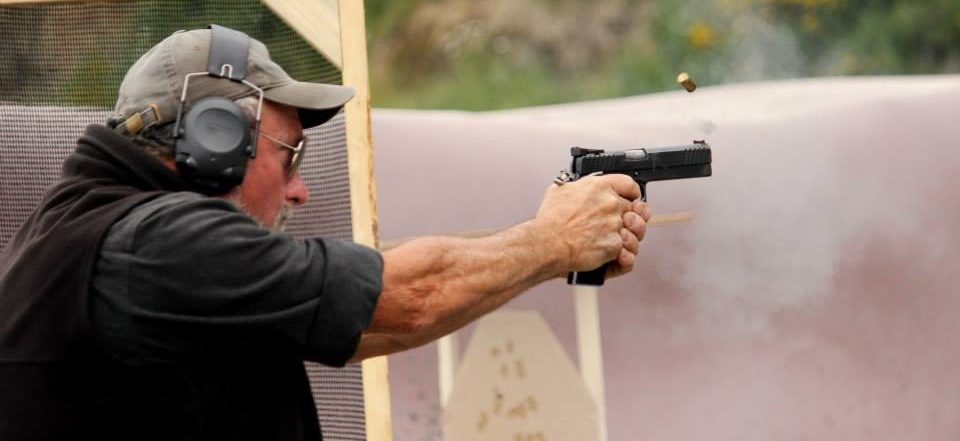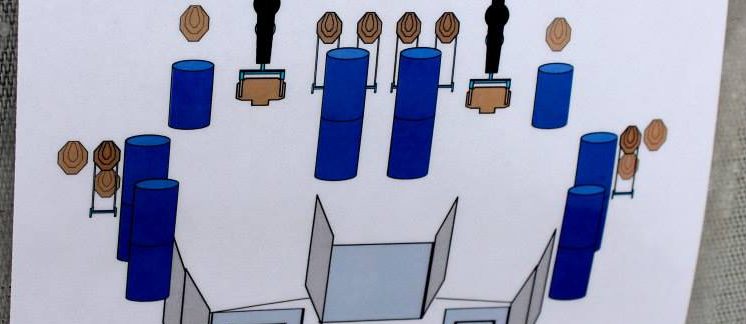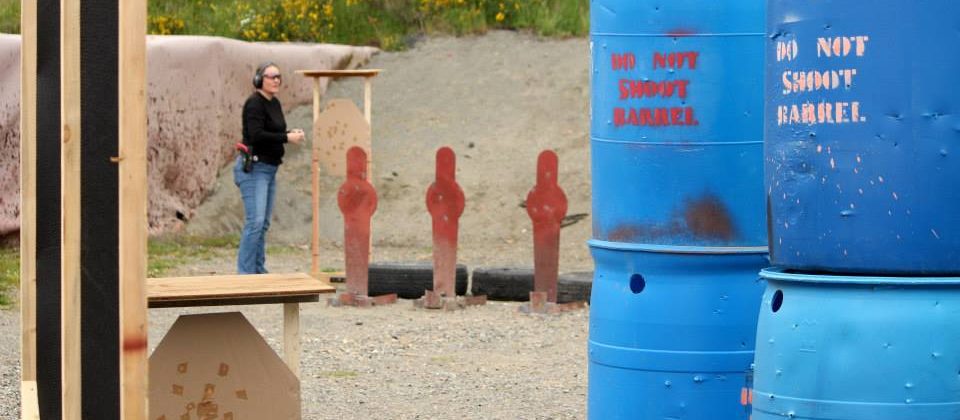Action Pistol shooting is a competitive sport where a shooter engages targets in an obstacle course as quickly and accurately as possible. The balance between speed and accuracy presents a fun and incredibly unique challenge.
Competitive Action Pistol shooting started originally in southern California in the late 1950’s. Today action pistol shooting is promoted in more than 75 countries around the world. Depending on where you are shooting, there are a variety of organizations which promote the sport of Action Shooting. On Vancouver Island, there are official IPSC, and IPSC-style Action Pistol competitions.
What is a stage?
A stage is a course of fire that has a unique array of targets, barricades, and shooting positions. Before shooting a stage, competitors will walk the stage and plan their movements.
A Range Officer (RO), will stand up range from the competitor at all times. The RO’s primary job is to make sure the competitor follows all safety rules. The RO also manages a timer that signals the beginning of the course of fire and records the timing of gun shots. When it’s time to shoot the stage, a single competitor will be instructed to approach the start position. The RO will say “Load and make ready,” and then the competitor will load their handgun and reholster. The RO will ask, “Are you ready?” and then “Standby” before the timer beeps. The competitor then moves through the stage and shoots the targets safely and as quickly as possible. Once the competitor stops shooting, the RO will say “If you are finished, unload and show clear.” The competitor then removes all ammunition from the gun and shows the RO the empty chamber. The RO will then say, “If clear, hammer down, and holster”. The competitor will then close the action of their gun, point the pistol downrange, and pull the trigger on an empty chamber before reholstering the unloaded pistol.
Once the Range Officer declares the range “safe” or “clear”, scoring can begin. The time (from the beep of the timer to the last shot) is recorded, and targets are examined for a tally of points. Once scoring is complete, targets are reset, and holes in paper targets are taped over for the next competitor.
What is a match like?
A match is a competition that consists of several stages. Shooters are grouped into squads. Each shooter in a squad will shoot a stage, and the rest of the squad will help prepare the stage for the next shooter. Once all shooters have shot the stage, the entire squad moves to the next stage. When all squads have completed all stages, the barricades, targets, and props are put back into storage while awaiting the final scores. Scores are presented for each stage, as well as the overall match.
Targets & Scoring
The goal is to score points as quickly as possible. “Hitfactor” is your average points per second, and the competitor with the highest hitfactor wins the stage. Hitfactor = Points / Time(s)
Paper targets are divided into three scoring zones. The goal should be to shoot for the A, or ‘Alpha’, but the other zones (C and D) count for points as well. Typically, your best two hits on a target are counted. This means you may be able to ‘make up’ poor shots and shoot the target again as needed.
Your choice of caliber and ammunition might affect your score on paper targets. There are technical specifications for “power factor” which is used to determine if you are scoring Minor or Major points. This may vary by rule books, but generally speaking, 9mm will mean you are “shooting Minor”, while anything larger will mean you are “shooting Major”. In Major scoring, Charlies are 4 points, and Deltas are 2 points. In Minor scoring, Charlies are 3 points, and Deltas are 1 point. Alphas count for 5 points in both Minor and Major.
Steel targets are very common, and they must fall down to score. ‘Poppers’ are standing ground targets that will fall forward or backward after being shot. Sometimes poppers may reveal hidden targets or activate moving targets when they fall. Moving targets are sometimes paper targets that bob out from behind a barricade, or are revealed quickly before being hidden by a penalty target.
Penalty targets are called “no shoots”, and are white paper targets. Usually, they are used to partially conceal a normal paper target to make the shot more challenging. Penalty targets are -10 points.




